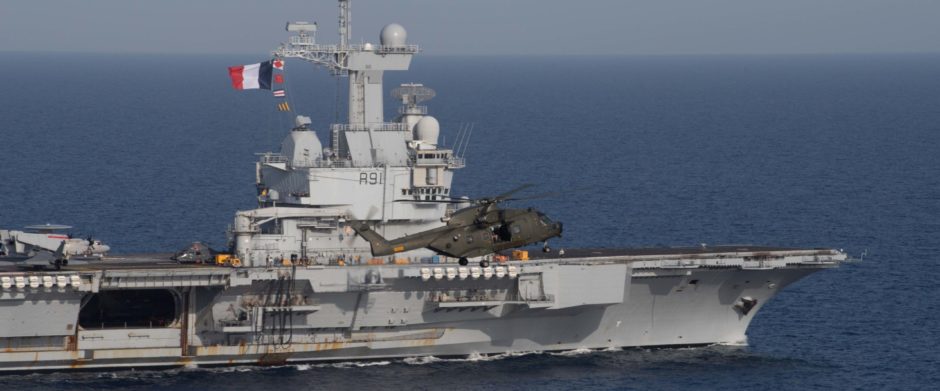The French case
In this new context, the idea of command of the Mediterranean sea appears. In France, Colbert builds its naval policy around this idea. In 1679, he writes to the général des galères : » Considérez s’il vous plaît quelle gloire le Roy et vous recevrez d’être entièrement maître de la Méditerranée et de n’avoir jamais aucune puissance dans cette mer qui puisse ni égaler ni balancer celle du Roy. » In his instructions to his son and successor, Seignelay, he repeats that the minister must » penser continuellement aux moyens de rendre le Roy maître de la Méditerranée « 16. His « grand dessein » receives a beginning of execution with the Sicily campaign where Vivonne and Duquesne are victorious at Stromboli, Augusta and Palermo (1676) but the tactical command of the sea obtained after these victories cannot be strategically exploited : France is too heavily engaged on the northeastern front and she is unable to provide troups to submit Sicily. The island is to be finally evacuated and the campain ends without result.
The effort of Louis XIV and Colbert and latter’s son Seignelay to build a strong navy is well-known17. The results are very impressive : a nearly ruined navy becomes in two decades the first in Europe and she competes more than honorably with the Anglo-Dutch coalition notably during the Nine Years’ War. But the main strategical theater is in the Channel18, the Mediterranean being a secondary theater. The main base is Brest even if Toulon receives important equipments (and many more projects)19. Toulon is still active in the first years of the War of the Spanish Succession (1701-1714)20. There is only one battle-in-line, Velez-Malaga, 1704, but both fleets are engaged in the support of armies operations in Catalonia. In october 1707, soon after the siege of Toulon, the well-know Duguay-Trouin and Forbin surprise an English convoy at Cape Lizard et capture it almost entirely : 4 warships and 60 merchant vessels. This coup d’éclat, somewhat forgotten by contemporary naval historians, has a great impact on the war in Spain : it is a severe blow for the Imperial army in Catalonia and contributes to the victory of Felipe V. French fleet also supports the sieges of Gibraltar and Nice21. But this naval effort collapses after 1706 for a lot of reasons : priority must be given to the Army to repel the invasion ; Toulon is besieged by the allies and suffers heavy casualties (1707) and, first of all in the longue durée, British having seized the splendid position of Gibraltar will constantly threaten the relations between Brest and Toulon.
France will not establish a durable seapower in the Mediterranean. She will try periodically to compete with England but cannot impose its domination at sea. The « grand dessein » of Louis XIV and Colbert is abandoned by their successors. The Regency will accept a second rank at sea and Louis XV will not rebuild seriously the navy. After the great disasters of the Seven Years’ War, (which occurs more in the Atlantic than in the Mediterranean) Choiseul tries to reconstitute the French naval power. Its aim is to have a navy reaching two thirds of the Royal Navy, with the hope that Spanish and Napolitan navies will give the complement to match the British superiority22. His policy will be validated during the American Independence War. It is during the last decades of the Ancient Regime that an efficient navy is able to match the Royal Navy. France has not a naval power in relation with its military power. Its maritime trade suffers heavily during the War Seven Year’s, but during the War of Austrian Succession and the American Independence War the navy was able to organise an effective convoy system23.
The British Command of Sea ?
If XVIIIth century’s France is not a seapower, may we say that England is a seapower in the Mediterranean during the XVIIIth century ? The answer seems evident. The XVIIIth century is the period of English ascendancy at sea. She has no longer rivals, her maritime trade is flourishing and her navy is able to compete with any ennemy and to deter some reluctant countries. In Mediterranean, the Royal Navy relies on the strategic base of Gibraltar seized in 1704 (and kept after the inconclusive battle of Velez-Malaga, August 24th, 1704) and during the first part of the century on the advanced post of Minorca seized in 1708 and she maintains a permanent squadron in the Mediterranean. As noted by Jeremy Black, British naval presence in the Mediterranean during the XVIIIth century marks the beginning of naval diplomacy : it » led some admirals, such as Byng in the late 1710 and Mathews in the 1740, wielding proconsular power, negotiating with foreign rulers, dictating to british diplomats » it was able to convoy troups, to mount amphibious operations and to intimidate Naples into neutrality in 174224.
But this is not without difficulties. During the Nine Years’ War, England engages privateers in Mediterranean (1695), which means that she has not sea control. The use of Gibraltar is the condition of exercising seapower in the Mediterranean but during the wars, the pressure on the reef is so great that a good part of the navy’s capabilities must be diverted to resupply the garrison. When the base is supposed to sustain the fleet, it is in fact sometimes the fleet which sustains the base. Consequently, the capabilities may be to weak to effectively dominate the Western Mediterranean in case of conflict or simply to protect the British trade. After the success of Gibraltar (March, 19 1705, five French ships of the line sunck and the siege of Gibraltar left off), the Royal Navy is unable to launch the attack against Cadiz feared by the French and the Spaniards25. And if French trade suffers heavily, British trade receives severe blows, from French privateers, but also from Tourville’s fleet (capture of the Smyrna convoy off Cape St-Vincent, June 1693 : 80 merchantmen seized). For a long time, British admirals are not very lucky in the Mediterranean. In 1704, the battle of Velez-Malaga is inconclusive and would have ended in disaster if the Earl of Toulouse had chosen to pursue the fight (British ships had no more munitions). Similarly, during the War of the Austrian Succession, in 1744, the blockade of the Spanish fleet initiated by admiral Mathew ends in failure after the battle of Cape Sicié ; he is court-martialed. In 1756, at the battle of Port Mahon (May 20th, 1756). Admiral John Byng is unable to repel the French fleet of La Galissonière and to prevent the fall of Minorca ; he is court-martialed and shot after an unfairtrial. The Royal Navy will take a revenge 3 years later in the battle of Lagos which sees the destruction of French Mediterranean squadron, but strategically, the result is ambiguous : British will be unable to recover Minorca and the shortage of bases will be fatal during the American Independance War.
We may then conclude that the Royal Navy has sea control in Mediterranean throughout the century. British trade is active, less sensitive to the shock of wars than the French26, thanks to a efficient system of convoys27 and this combination of commercial and naval preeminence characterises seapower. But this seapower is not synonymous of hegemony. Britain has a good instrument but it is insufficient to match the coalition of Mediterranean powers. Britain has to rely on French alliance against Spain during the Regency (the Spanish fleet is destroyed at the battle of Cape Passaro, August 11th, 1718, while supporting operations in Sicily28), on Spanish alliance against France during the first years of the Revolution, but when she is confronted to the coalition of Mediterranean powers against her, she is unable to retain strategic sea control as it is verified during the American Independence War or for some months in 1797-1798. The British case in Mediterranean during the XVIIIth century remains us that seapower is not necessarily absolute and does not mean sea supremacy.
Notes:
16 Quoted in Gaston Zeller, La Mediterranée et ses problèmes aux XVIe et XVIIe siècles, Les Cours de Sorbonne-CDU, s.d., p. 206.
17 Daniel Dessert, La Royale. Vaisseaux et marins du Roi-Soleil, Paris, Fayard, 1996.
18 Jean Meyer, Béveziers 1690. La France prend le contrôle de la Manche, Paris, Économica, 1993.
19 Jean Peter, Vauban et Toulon, Histoire de la construction d’un port arsenal sous Louis XIV, Paris, ISC/Économica, 1994.
20 Jean Peter, Le port et l’arsenal de Toulon sous Louis XIV, Paris, ISC-Economica, 1995.
21 Jean Peter, Les artilleurs de la marine sous Louis XIV, Paris, ISC-Économica, 1995.
22 H.M. Scott, « The Importance of Bourbon Naval Reconstruction to the Strategy of Choiseul after the Seven Year’ War », International History Review, 1979-1.
23 Hervé Coutau-Bégarie, « Quelques observations sur les aspects tactiques et stratégiques de la guerre sur mer au XVIIIe siècle », Revue d’histoire maritime, 1997, n° 1.
24 Jeremy Black, « Introduction », in Jeremy Black and Philipp Woodfine (eds.), The British Navy and the Use of Naval Power in the XVIIIth Century, Leicester, Leicester University Press, 1988, pp. 10-11.
25 Jean Peter, Les artilleurs de la marine sous Louix XIV; op. cit., p. 114.
26 François Crouzet, De la supériorité de l’Angleterre sur la France, Paris, Perrin, 1985, p. 25.
27 Alan Pearsall, « The Royal Navy and the Protection of Trade in the Eighteenth Century », in Journées franco-britanniques d’histoire de la Marine, Guerres et paix 1660-1815, Vincennes, Service historique de la Marine, 1987.
28 John B. Hattendorf, « Admiral Sir George Byng and the Cape Passaro Incident 1718. A Case Study in the Use of the Royal Navy as a Deterrent », in Journées franco-britanniques d’histoire de la Marine, Guerres et paix 1660-1815, Vincennes, Service historique de la Marine, 1987.





